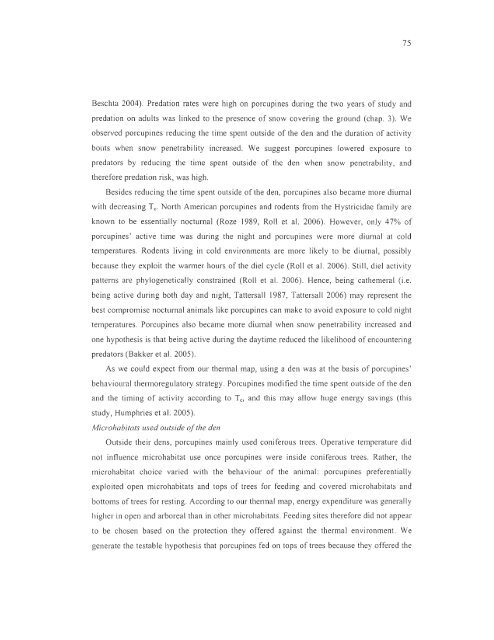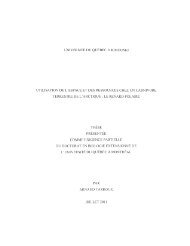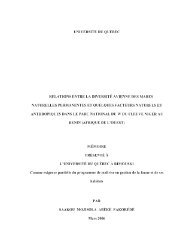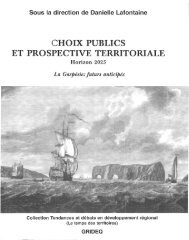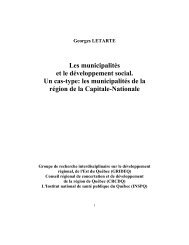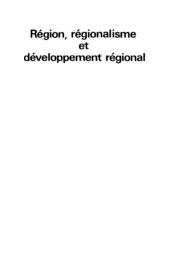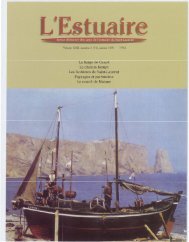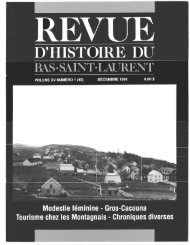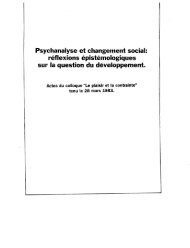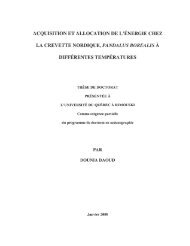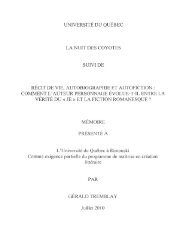influence du climat et de la prédation sur l'utilisation de l'habitat et la ...
influence du climat et de la prédation sur l'utilisation de l'habitat et la ...
influence du climat et de la prédation sur l'utilisation de l'habitat et la ...
You also want an ePaper? Increase the reach of your titles
YUMPU automatically turns print PDFs into web optimized ePapers that Google loves.
75<br />
Beschta 2004). Predation rates were high on porcupines <strong>du</strong> ring the two years of study and<br />
predation on a<strong>du</strong>lts was linked to the presence of snow covering the ground (chap. 3). We<br />
observed porcupines re<strong>du</strong>cing the time spent outsi<strong>de</strong> of the <strong>de</strong>n and the <strong>du</strong>ration of activity<br />
bouts when snow pen<strong>et</strong>rability increased. We suggest porcupines lowered expo<strong>sur</strong>e to<br />
predators by re<strong>du</strong>cing the time spent outsi<strong>de</strong> of the <strong>de</strong>n when snow pen<strong>et</strong>rability, and<br />
therefore predation risk, was high.<br />
Besi<strong>de</strong>s re<strong>du</strong>cing the time spent outsi<strong>de</strong> of the <strong>de</strong>n, porcupines also became more diurnal<br />
with <strong>de</strong>creasing Tc. North American porcupines and ro<strong>de</strong>nts from the Hystricidae family are<br />
known to be essentially nocturnal (Roze 1989, Roll <strong>et</strong> al. 2006). However, only 47% of<br />
porcupines' active time was <strong>du</strong>ring the night and porcupines were more diurnal at cold<br />
temperatures. Ro<strong>de</strong>nts living in cold environments are more 1ikely to be diurnal, possibly<br />
because they exploit the walmer hours of the diel cycle (Roll <strong>et</strong> al. 2006). Still, diel activity<br />
patterns are phylogen<strong>et</strong>ically constrained (Roll <strong>et</strong> al. 2006). Hence, being cathemeral (i .e.<br />
being active <strong>du</strong>ring both day and night, Tattersall 1987, Tattersall 2006) may represent the<br />
best compromise nocturnal animais like porcupines can make to avoid expo<strong>sur</strong>e to cold night<br />
temperatures. Porcupines also became more diurnal when snow pen<strong>et</strong>rability increased and<br />
one hypothesis is that being active <strong>du</strong>ring the daytime re<strong>du</strong>ced the likelihood of encountering<br />
predators (Bakker <strong>et</strong> al. 2005).<br />
As we could expect from our thermal map, using a <strong>de</strong>n was at the basis of porcupines'<br />
behavioural thermoregu<strong>la</strong>tory strategy. Porcupines modified the time spent outsi<strong>de</strong> of the <strong>de</strong>n<br />
and the timing of activity according to Tc, and this may allow huge energy savings (this<br />
study, Humphries <strong>et</strong> al. 2005).<br />
Microhabitats used outsi<strong>de</strong> of the <strong>de</strong>n<br />
Outsi<strong>de</strong> their <strong>de</strong>ns, porcupines mainly used coniferous trees. Operative temperature did<br />
not <strong>influence</strong> microhabitat use once porcupines were insi<strong>de</strong> coniferous trees. Rather, the<br />
microhabitat choice varied with the behaviour of the animal: porcupines preferentially<br />
exploited open microhabitats and tops of trees for feeding and covered microhabitats and<br />
bottoms of trees for resting. According to our thennal map, energy expenditure was generally<br />
higher in open and arboreal than in other microhabitats. Feeding sites therefore did not appear<br />
to be chosen based on the protection they offered against the thennal environment. We<br />
generate the testable hypothesis that porcupines fed on tops of trees because they offered the


